.
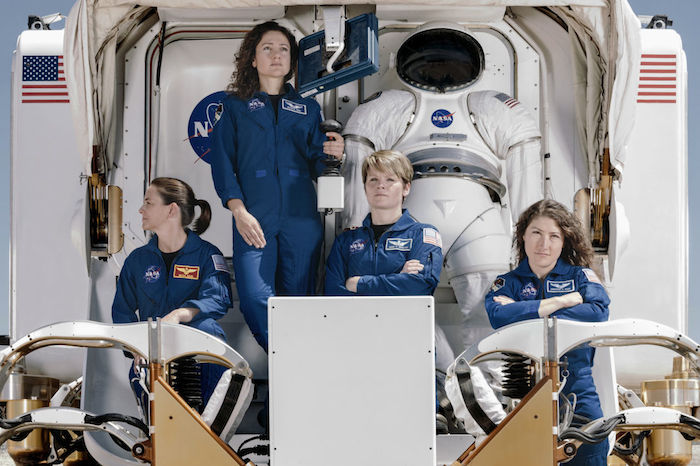
The New Women of NASA
Four extraordinary women make up half of NASA’s most recent astronaut class—and they may go to Mars.
One day, the world will watch as a female astronaut and her crew blast off toward mankind’s next frontier: a deep space voyage to Mars. As the spacecraft approaches the Red Planet, they will send an interplanetary update to Earth. The radio message to Houston—Mission Control at Johnson Space Center—could take up to 30 minutes to arrive, as the spacecraft will be at least 35 million miles away.
After a jarring descent down to the rocky terrain, she and the team will exit the landing module and, wearing pressurized suits, set foot onto an alien world. It will be well beyond freezing-cold, it will be dangerous, and for the first woman to set foot on a planet other than earth, it will be historic on many levels.
That woman could be Christina Koch, Nicole Mann, Anne McClain or Jessica Meir. The quartet, in fact, has already made a different type of history: they compose half of NASA’s most recent astronaut class, their best showing in the agency’s 58-year existence.
.
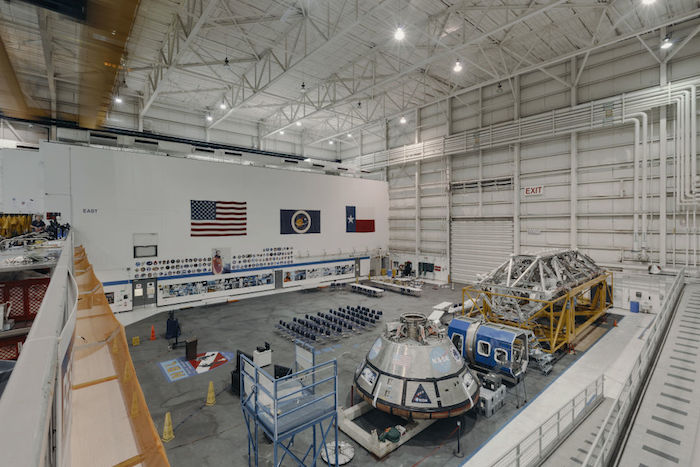
In 2013, the team was selected from a pool of more than 6,100 top-tier applicants after an 18-month search, one that NASA says was not about gender, but the right stuff. “We picked the very best of the group,” says Ann Roemer, a member of the astronaut-selection committee at Johnson Space Center, “and four of the eight happened to be women.”
Mann and McClain are military pilots with engineering degrees and the rank of Major. Koch and Meir are scientists with rugged, hands-on experience in some of Earth’s harshest regions. It’s easy to see how they rocketed to the top: Among the four of them, they share six advanced diplomas, thousands of hours of military flight time, and a dizzying list of awards, medals and recognitions.
But Meir sums up their path in one word: “Luck,” she says, adding, “I really mean that. All eight of us know how lucky we are to be chosen out of that exceptional pool of applicants, especially in the final round.”
The astronauts in the class of 2013—NASA’s 21st—were certified last year, following an intensive two-year qualification program that included instruction in International Space Station systems, extravehicular activity (EVA), and robotics, along with training in physiology, jet test flights, and water and wilderness survival.
The team is suiting up just as NASA alters its trajectory. After President Obama’s JFK-esque speech in 2010, in which he made the case for a mission to Mars—and made clear that he wanted “to be around to see it”—NASA last year unveiled its Journey to Mars program, which envisions a human landing there in the 2030s.
The space shuttle has been replaced by the new Orion capsule spacecraft and service module, which made its first launch in December 2014. The Mars journey—a methodical process that will start with orbits close to home before moving to deep space over time—features the Orion program, the International Space Station, global partners such as Russia and China, and the participation of private space-exploration companies like Boeing and Elon Musk’s SpaceX. (Musk recently announced his intention to send his Dragon capsule to Mars as early as 2018.) NASA’s Journey to Mars brings sci-fi to reality: Plans include an asteroid-retrieval mission, a deep-space habitat, a potential landing on a Mars moon, and, finally, a Red Planet human landing.
.
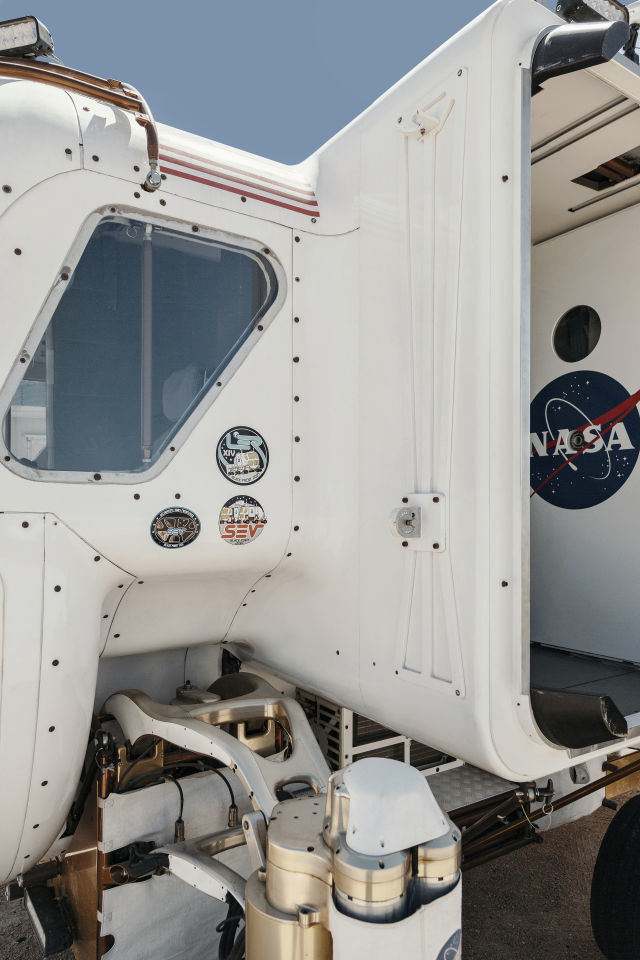
The Multi-Mission Space Exploration Vehicle
.
For those onboard, a Mars journey will be long, taxing and risky, with a round trip taking as long as three years. Astronauts will face radiation exposure and muscle deterioration; they may have to grow their own food. And the planet itself, with its global dust storms, violent marsquakes, active volcanoes and frigid temperatures (Mars averages -67 degrees Fahrenheit), is far from hospitable. Astronauts landing there would have to live in habitats constructed to withstand the brutal Martian climate or, perhaps, below the surface.
But the allure is powerful. There’s already proof of liquid water on our neighbor’s familiar-looking terrain, which evokes the deserts of Arizona and Utah, plus a possible goldmine of harvestable minerals. Little wonder, then, that scientists and science-fiction writers alike have envisioned it as, potentially, humanity’s next colony.
The demands of interplanetary travel call for a new breed of pioneering, self-reliant astronauts. According to NASA’s Roemer, they “need to be jacks-of-all-trades, team players, and have to do a little bit of everything.”
Along with the rest of the team, Koch, Mann, McClain and Meir spend their days refining their skills at Johnson Space Center, where rotations include working inside full-size models of the International Space Station and the Orion command capsule, practicing with Mars rover prototypes, and diving in full spacesuits in the Neutral Buoyancy Lab (NBL) pool, to simulate a spacewalk. Lessons cover everything from simple welding and jet hydraulics to basic plumbing and the Russian language.
The work is physically and mentally challenging, even for these high-achievers. “You get used to being really good at what you do,” says Mann. “So it’s very humbling, because you come here and learn all these different skills, and you’re not so good, necessarily, at all of them.”
And while these newcomers would be forgiven for a little cockiness, they profess a profound sense of humility, as well as awe for the program, their senior astronauts, and each other. “The eight of us are super close. We really are like a family,” says Meir of her classmates. (Koch, McClain and Meir are even on JSC’s dodgeball team, The Buck Dodgers.)
The four all say they’re excited about the public’s rejuvenated interest in space, fueled by the Mars Curiosity Rover, SpaceX, Scott Kelly’s 340-day space odyssey, and Hollywood’s recent space-themed blockbusters. “You look at YouTube, Twitter, movies like The Martian—people are excited and are talking about space again,” says Mann. Roemer says that some 18,300 applications—three times the amount of the last pool—have poured in for the next group of astronauts, who will be selected in 2017.
.
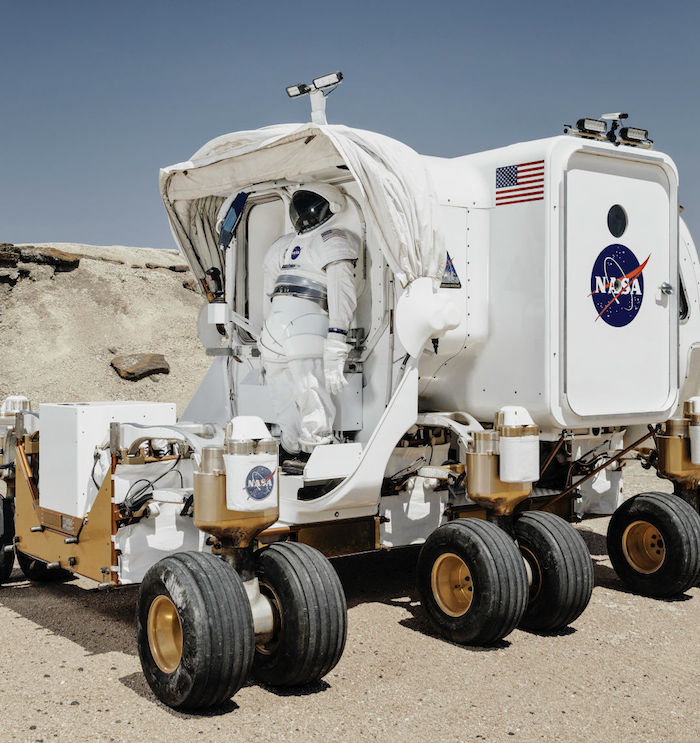
The Multi-Mission Space Exploration Vehicle
-
The women of NASA’s 2013 class have captured the public’s imagination. Young girls interested in science pack their appearances, clamoring for selfies and autographs. Thousands follow their every post on Twitter, commenting that they are “role models,” “inspirational”—and, for better or worse, “beautiful.”
While the four astronauts have accepted the attention with good nature, they look forward to a day when half an astronaut class being female won’t count as news. Of NASA’s 45 astronauts, only 14 are women, including the new recruits.
As McClain is quick to point out, women have always played a pivotal role at NASA. “Men and women built this program,” she says. “Even in the ’60s, some of the women engineers here made breakthroughs that were absolutely critical to our mission success.”
Koch and her female colleagues say they hope to direct the spotlight back onto NASA and their fellow astronauts. “If all this brings more attention to the space program,” she says, “then any small negative is far outweighed by that positive.”
Like their male counterparts, the women acknowledge that space travel can be taxing as a spouse and a parent (two of the four have kids). Nevertheless, becoming an astronaut represents the fulfillment of a lifelong dream. “I imagine a really profound sense of responsibility and honor to be the one who is carrying the hopes and dreams of an entire humanity,” says Koch, envisioning her first step on Mars.
With a sense of duty, they also bring to the job a sense of humor: McClain imagines that first Martian step as the “intersection of magical and practical,” and with a chuckle, admits she’d feel “an overwhelming sense of, ‘Please, don’t fall over.’”
.
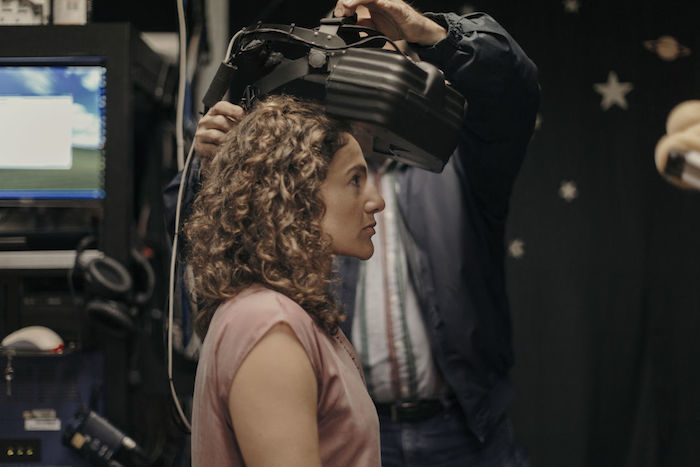
Jessica Meir at NASA’s virtual reality lab
-
Name: Jessica Meir
Callsign: Goose
IT’S POSSIBLE THAT, TO SURVIVE on Mars, space travelers may first need to become cave dwellers, living beneath the surface in what scientists call “lava tubes.” Forged by volcanic eruptions, these subterranean tunnels, some scientists theorize, could protect astronauts and equipment from planet-wide dust storms and the sun’s blistering radiation. The first Martian spelunkers, in other words, would need to be comfortable navigating deep underground channels.
Such a mission would hardly be foreign to Jessica Meir. Here on Earth, Meir, 38, spent years plunging through nine feet of Antarctic sea ice to track how emperor penguins process oxygen. In 2004, working toward her PhD in marine biology, she joined a team of researchers at the Scripps Institution of Oceanography’s Antarctic penguin research facility—dubbed the “penguin ranch.”
The work often mixed research with arduous labor: Meir wrangled curious penguins and equipped them with backpack monitors in order to study the way they dive into the ocean’s depths on a single gulp of air. The research has helped scientists determine how humans can manage depleted oxygen levels while traveling in deep space.
“We’re down there conducting scientific experiments, making sure that we design a robust and rigorous experimental protocol,” Meir recalls, “and so academically, you’re really using that part of your brain. But you’re doing that in a harsh environment like the Antarctic. One day, you might not be doing any experiments. There’s a major snowstorm, and you’re shoveling snow, chipping ice away in the hole and making sure the penguins are okay down there.”
Meir’s subsequent research required even more animal whispering: She studied and even raised geese from birth during her post-doctoral research, at the University of British Columbia from 2009 to 2012, in order to examine their high-altitude physiology. Meir would equip the birds with monitoring hardware before teaching them how to fly in a wind tunnel, going as far as fitting the goslings with facemasks. (The geese imprinted on her, and would follow her on walks at the campus; the photos are priceless.)
Fittingly, Meir’s NASA call sign, Goose, is a nod to Mother Goose, she says, and not a reference to “people thinking I’m going to die in the back seat of the jet like in Top Gun.
A certified private pilot and scuba diver, Meir’s an eager co-pilot in the air and in the classroom. She especially enjoys her NBL underwater spacesuit training. “I love it—I’m really comfortable being underwater,” says the astronaut, who, in 2002, spent time researching with Scott Kelly’s crew in NASA’s underwater Aquarius habitat mission.
Her comfort level in Earth’s depths will come in handy later this month, as Meir will travel to Italy to join an international team of astronauts for the European Space Agency’s CAVES mission, in which the team—likely comprising members from Russia, Japan and China—will explore and live in the dark confines of Sardinia’s Sa Grutta caves, performing scientific experiments along the way.
“There are some passages where you can barely squeeze yourself through,” says Meir. And while the experience could be good training for a future Mars cave mission, “it’s really more about putting yourself in a risky, possibly high-stress environment and performing as a crew,” she says. “You have to make sure that you’re taking care of your own safety, and the safety of your crew, and so that’s when those expeditionary skills are really driven home.”
Meir, who drew a picture of herself in space when she was 5, has an early NASA background: After earning her master’s in space studies from International Space University in 2000, and before shipping out to Antarctica, she worked at JSC as a research liaison between scientists and ISS astronauts. Most recently an assistant professor of anesthesia at Harvard Medical School, she knows her journey to space has been atypical. “Becoming a biologist is not the most conventional way to become an astronaut,” she says.
Up in space, Meir’s dream role would include “doing everything to contribute to the entire flight as a whole, and focusing on the science, particularly with the physiology and understanding more about how spaceflight and microgravity environment affect the human body.”
Meir has become a new public face for the program, serving as a guest on TV news programs, science and space conventions, and even at South by Southwest. But her favorite place to be is the point where academics and athletics intersect, a fitting attribute for a deep-space explorer. “That’s when I’m happiest,” she says, “when I’m doing something that involves both a mental and physical challenge.”
.
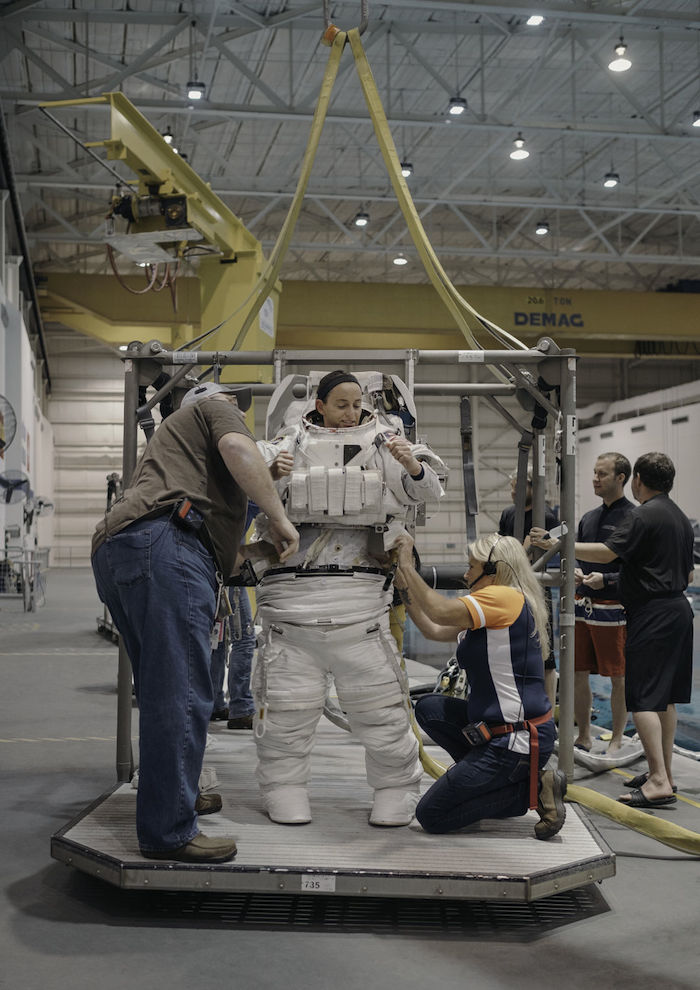
Nicole Aunapu Mann suits up for a dive.
-
Name: Nicole Aunapu Mann
Callsign: Duke
MAJOR NICOLE AUNAPU MANN remembers the surreal blackness of those Afghanistan nights, as her F/A-18 Hornet fighter jet zoomed at supersonic speeds over the desolate landscape.
“You honestly feel like you’re in another world,” she recalls of her time flying 47 combat missions over Iraq and Afghanistan from 2006 to 2007. Mann has logged some 2,000 flight hours in 21 types of aircraft in her career, amassing a long list of military medals and unit commendations. Her call sign, Duke, is from her military piloting days.
“You’re flying over those dark mountains. You’re supporting troops on the ground who are taking fire. It’s no place you want to be—nobody ever wants to go to war. But you’ve trained your whole life, and you’re ready to do your job, to protect those guys on the ground the very best that you can. You’re very laser-focused, because that’s your mission.”
Mann speaks of her days of taking off from and landing on ocean aircraft carriers—one of the hardest maneuvers in military aviation, especially at night—with a diffident pride, preferring to focus on the successful missions. But today, she’s giddy at the idea of a new mission: zooming through the surreal blackness of deep space and, perhaps, over the desolate landscapes of Mars. “I think that having that experience, of seeing some of the worst of humankind,” she says, “makes it all the more important to know that there’s something out there that can unite. Perhaps we can unite the world in some way, as we explore our universe further.”
Mann, who turns 39 this month, has been using her cockpit skills to tutor astronauts who don’t have operational experience with NASA’s test jet, the T38. “It’s fun to play that teacher, that mentor role to even some of my senior astronauts,” she says, “because you’re sharing those experiences.”
Of her duties at NASA, one has been particularly daunting: “Russian!” she laughs. A former Academic All-American who earned her undergraduate degree in mechanical engineering at the U.S. Naval Academy and her master’s degree in the same field at Stanford University, Mann says trying to learn the foreign tongue has been humbling. “I’ve had to make charts, where other people would just pick it up,” she says. “I’m totally warming up the right side of my brain—it’s probably been sleeping for a while.”
Not that she’s complaining. “Sometimes I look at my schedule, and I think, ‘Wow, I have a really cool week coming up!’” she says. “I’m getting trained on all these different, amazing things: One day I’m in the new Orion pressure suit, doing a fit check on that. The next day I’m in the Orion simulator. One day I’m dissecting a mouse, the next day I’m in the T38, the next day I’m doing Russian-language training, and I’m learning to pull a tooth in space.”
Mann, who also scuba dives, loves the physical challenge of NBL buoyancy spacesuit training as much as Meir does. “You are wiped out after six hours!” And she’s looking forward to rotation time at a hospital in Houston, where she and her classmates will learn to treat patients in the ER. “The idea is to give you this exposure event, because it may be the first time you see someone cut up, or something gory or traumatic,” she says. “If something happens on the space station, and if there’s not a flight doc, you’re going to have to deal with it.”
Aside from dealing with the demands of her NASA career, Mann juggles another fulltime task: parenting her 4-year-old son, Jackson. Her husband’s own military deployment has been useful in helping Jackson adapt to her travel and work schedule, she says. There’s also the digital parenting assist: “It’s great these days, because you can FaceTime,” says Mann. “Jackson could see, talk, sing and play a game with his dad while he was stationed in Bahrain.”
What Mann loves most about her job is its impact. Today, as part of a team of astronauts helping to tweak the Orion’s cockpit ergonomics and instrument positioning, her work is crucial to the success of future missions to space. One day, she hopes another astronaut may find flying easier because of her input—even if that astronaut isn’t her.
“You’re not focused on you, as in, ‘I want to be the person to go to Mars,’” says Mann. “You’re focused on, ‘I want to play a significant role in this big team, so that we, as humans, get to Mars.’”
.
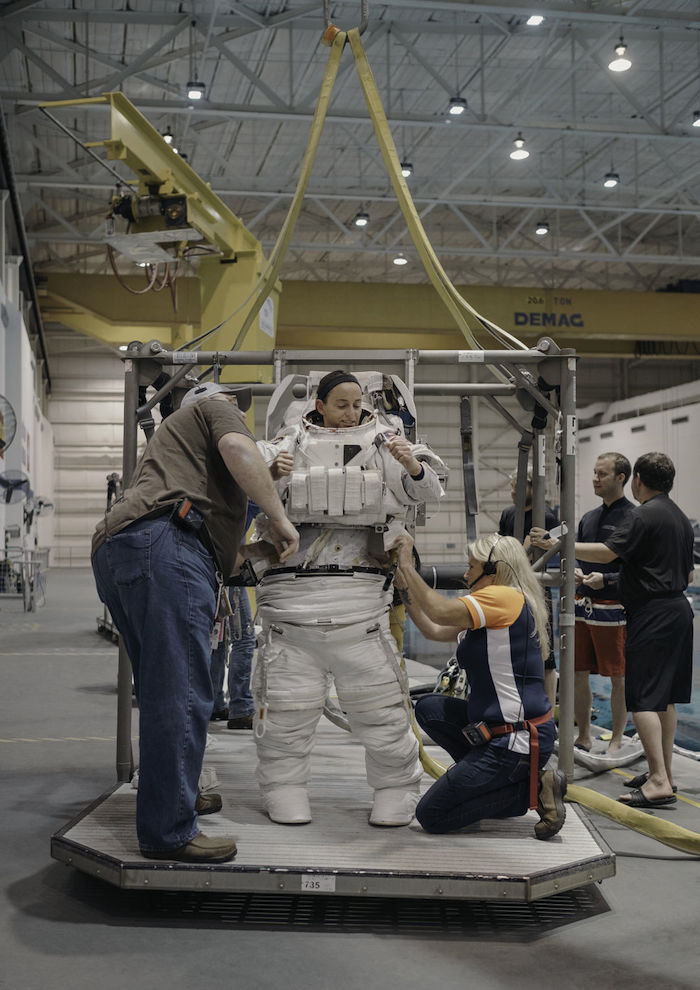
Anne McClain prepares to dive at the NBL.
-
Name: Anne McClain
Callsign: Annimal
“GOOD WORDS.”
It’s a ubiquitous phrase at NASA, one that simply means, “I understand.” But it’s also used to recognize a precise, well-executed message—which is crucial in an organization where myriad, multi-tiered groups are communicating at the same time during missions.
Major Ann McClain seems to have a toolbox full of good words, which she fires off during casual conversation. On managing nerves: “Emotions, good or bad, are not useful in a complex environment.” On preparation: “Hope is not a course of action.” On complacency: “Repeatability does not equal reliability.” And on her new workplace: “NASA is very good at making the extraordinary appear ordinary. The amount of work it takes—individual preparation, teamwork and communication—is astronomical.”
It’s easy to picture McClain—who flew 800 combat hours on 216 Army combat missions—as a helicopter mission commander during the Iraq war, garnering awards and recognitions for her service. She studied mechanical and aeronautical engineering at West Point, and earned master’s degrees in aerospace engineering and international relations from the University of Bath and University of Bristol in England, respectively. Her call sign, Annimal, dates back to her bruising rugby days (McClain was on the USA Rugby Women’s National Team).
McClain still remembers her tears, and her mother’s screams of joy, when NASA called. “I always tell people,” she says, “be unrealistic about your dreams, but be realistic about your path.”
Today the preparation-minded McClain, who turns 37 this month, focuses on training “for the worst day,” with the goal of being ready for any assignment. “Whether it’s a first flight in a new vehicle, seeing the backside of the moon, going to Mars, doing an asteroid retrieval mission—all of those would be a dream mission,” she says.
Like Mann, McClain has taken to the role of rookie expert, drawing from her flight experience to advise other astronauts. “With every path I took in the military, and every aircraft I flew, I had people with a wealth of knowledge who had flown that aircraft before and been in many situations, and you could pick their brain.”
Still, she’s learning as she goes. “Every day we’re doing things that no one’s done before, and we’ll be flying a vehicle that’s never been flown before,” says McClain. “So understanding that there is no subject-matter expert to go talk to, but rather, you are the subject expert—even though you’ve never done it—is something to get used to.”
.
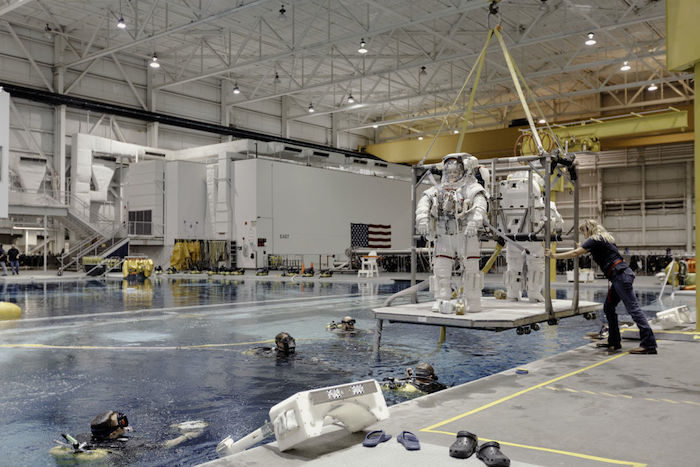
McClain’s combat experience, meanwhile, has given her a philosophical view of space travel. “I tend to be an eternal optimist, which maybe my career shouldn’t lend itself to, but it does,” she says. “We have seen that in times of great crisis, people come together, because we realized our commonality. How incredible would it be, if instead of through great crisis, but rather through great human achievement, we can feel that closeness?”
McClain is also a mother. Her rigorous NASA schedule is more predictable than military life was. “I’m actually home more right now than when I was military,” she says. While McClain is constantly wowed by her work at NASA, her 3-year-old son, Briggs, isn’t yet impressed. “At that age, what your parents do is pretty normal,” she says. “So I think he thinks everybody goes to space. Whenever I FaceTime him from somewhere else, he always asks, ‘Are you in space now?’”
She knows she may need to parent her son from space one day. “He doesn’t listen to me when I’m here, let alone if I’m on Mars,” she says. “Maybe it’ll be more effective.” She imagines what she might say to him as she travels the solar system: ’When I’m home from Mars, and you’re 13, you’ll be in big trouble.’”
Whether she’s Earthbound or Mars-bound, McClain—who announced to her mother when she was 3 years old that she would one day be an astronaut—wants to impart a sense of fearlessness and purpose to her own kin.
“My hope is that my son grows up understanding that it’s important to pursue your dreams, that nothing great is achieved without risk,” says McClain. “There are sacrifices along the way, but those sacrifices are worth it, and you never take the easy road. If he grows up knowing that, then I’ll be a proud mom.”
.
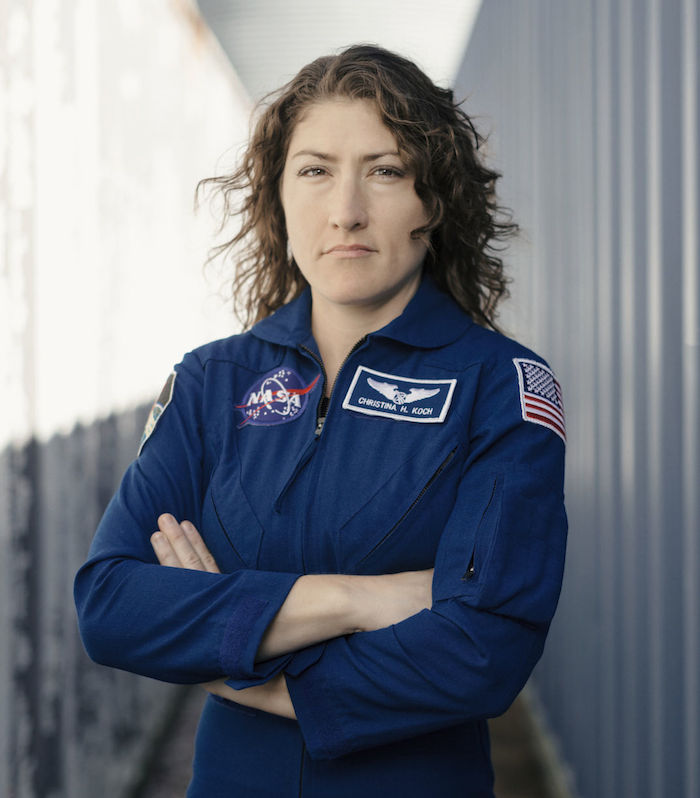
Christina Koch was stationed near the Arctic Circle when she applied to NASA.
-
Name: Christina Koch
Callsign: Nana
IN 2004, CHRISTINA KOCH DID the unthinkable for any young hopeful dreaming of a career in space: She left her job at NASA.
It was her first position out of college, as an electrical engineer, working on science instruments for the International Space Station. “It was an awesome job. I loved it,” says Koch. “And then one day, I announced I was quitting to go work at the South Pole for a year.” Her colleagues raised their collective eyebrows. “Some of the feedback I got was not necessarily positive or encouraging,” Koch recalls. “But I knew I was passionate about exploring and science on the frontiers, and I knew that meant I had to go to Antarctica.”
Hailing from “a very scientific and intellectual family in small-town North Carolina,” Koch has faced the bleak iciness of Greenland and the harsh blizzards of the Arctic and Antarctic, all in the name of science.
Working in small research teams while crammed into crowded living spaces, she garnered a reputation for handiness, a diplomatic demeanor (she served as go-between for the crew and a difficult team member during one expedition), and resourcefulness (her experience includes stints on firefighting and ocean/glacier search-and-rescue teams in Antarctica)—all traits that translate perfectly at NASA.
Koch, 37, didn’t apply to the astronaut program in 2009 because she didn’t think she was ready. But when invitations for the 21st class were announced, she took a hard look at the job description. “I had worked at two different positions at two different firms, working as a NASA-contracted electrical engineer. I had also worked in a different environment in field camps—I moved up to the Arctic realm.”
She eventually submitted her application from her tiny room at a National Oceanic and Atmospheric Administration facility, some 500 miles north of the Arctic Circle in Barrow, Alaska. The physical distance was symbolic, she thinks, of how far she had come.
At NASA, Koch channels her inner MacGyver, reparing and diagnosing problems on both scientific and general-systems equipment. “I’m very comfortable with both mechanical and electrical systems because of all the things I worked on in different remote places,” she says.
She recalls one less-than-glamorous challenge during astronaut training, in which she took on the title of emergency plumber. “Two of us had to leave our crew quarters and fix the water-hygiene compartment,” she says. The pressure was on—if not in the toilet’s plumbing. “While we were working on it, no one was actually allowed to use the WHC in the dorm facility where we were all staying.”
A concept Koch learned during NASA flight training in Pensacola, Florida, has served her well: Chair flying, as it’s called, is the piloting practice of pre-takeoff visualization. “You actually act out the different things that are going on, and you picture the other players in that,” she explains, “as well as the equipment they are utilizing in the task you’re performing.”
Koch says for her, chair flying goes past the cockpit. “I apply it to spacewalk training, and to everyday situations, like interacting with people. Anything that is complex and especially new.”
As a young girl, Koch put up posters of the moon and the Antarctic on her bedroom wall. A pivotal, inspiring moment was meeting Sally Ride, the first American woman in space, and herself a scientist, in 2003. Like her idol, Koch now serves as a role model for the many aspiring, female MacGyvers out there dreaming of space. She also, she says, serves as a sort of “caretaker” to her group, hence her call sign, Nana.
“If you can learn to love the things that are most challenging for you, you’ll go far in life,” she says. “Because usually, the things that are most challenging and scary are the things that are right on the edge of your abilities. The things that, if you push yourself just enough, you will accomplish.”
Quelle: Houstonia
4197 Views
